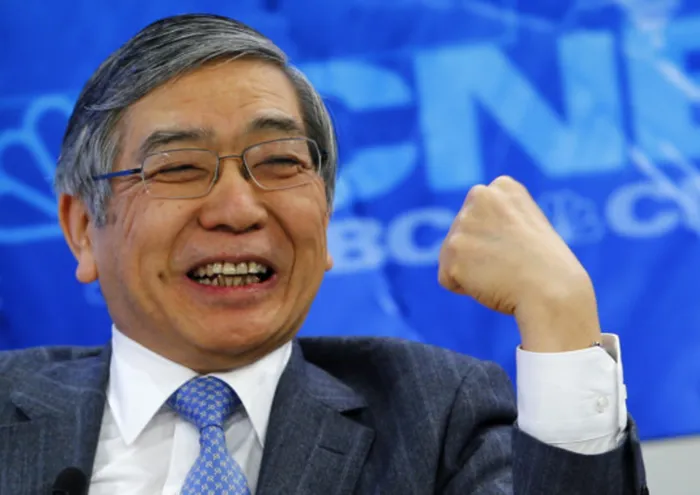Bank of Japan decision will ripple around the world

Picture: Bank of Japan Governor Haruhiko Kuroda. The governor steps down in April, so Tuesday’s decision increases the expectation that his replacement will usher in further monetary tightening, the writer says.
By Marcus Ashworth
The year isn’t yet done with rattling investors’ cages. The Bank of Japan’s (BOJ’s) surprise widening of its yield curve-control policy on 10-year government bonds will have an impact far beyond its shores. The decision may be ostensibly designed to improve the functioning of its domestic government and corporate bond markets – which have sunk into an illiquid quagmire – but the unspecified reasons may be more compelling.
Most importantly, the move adds weight to the recent downturn in the strength of the US dollar. The BOJ had been struggling to square a circle: To boost inflation by maintaining super-easy monetary policy without having the yen suffer disproportionately. According to Kit Juckes, currency strategist at Societe General, the yen is at its lowest real effective rate since 1973. In October – when the yen briefly topped 150 to the dollar – Japan had some tactical success turning the tide when it deployed foreign exchange reserves. Now there is some definitive policy strategy to back it up. That matters because the BOJ can’t just sell off reserves forever. The yen gained nearly 4 percent to the dollar.
If the dollar weakens further, it will make life easier for the rest of the world, too. The euro’s breach of parity with the greenback this autumn, and sterling’s worryingly close dalliance, now look to be more confidently in the rear-view mirror. Developing markets will also be relieved.
Global equity and bond markets, however, will see seasonal hopes for a rally dissipate. Japan stocks were hit hard, and the country’s 10-year government bond yields rose 10 basis points to 0.4 percent. There was one bright spot though: The banking sector leapt for joy at the prospect of a steeper yield curve allowing their net interest margins to widen.
The knock-on effects were seen immediately with the US Treasury curve steepening as long-end bond yields rose more. At the same time, euro and UK bonds saw absolutely no respite in their significant shift higher in yield since the European Central Bank’s hawkish message last week. A strengthening yen may prompt more repatriation from Japanese investors, a persistent trend this year.
The BOJ has been the last holdout on negative rates, so these tentative signs that it might be buckling will heighten expectations we may be in for more unsettling volatility in 2023. Markets really don’t like uncertainty, and even a suggestion that Japan might be forced into letting bond yields soar higher is enough to get risk managers heading for the exit. Fixed income isn’t quite the haven some commentators had convinced themselves it might be in the new year.
BOJ Governor Haruhiko Kuroda was at pains to downplay any implications for official rates, but this sudden move after implacable denials speaks louder. The BOJ did increase its QE bond buying ammunition to 9 trillion yen ($68 billion) per month from 7.3 trillion yen – all to defend its new line in the sand, the 0.5 percent 10-year yield. But this is merely a symbolic delaying tactic. Kuroda steps down in April, so Tuesday’s decision increases the expectation that his replacement will usher in further monetary tightening. This is no longer an impenetrable negative interest rate fortress. It might make foreign speculators meditate on the perils of shorting both Japanese government bonds and the yen simultaneously.
The BOJ policy minutes noted that core consumer price rises are around 3.5 percent, an uplift from the prior statement, as well as emphasising that inflation expectations have risen. That is welcome because, unlike other central bankers, Kuroda has struggled against deflation throughout his decade-long tenure. However, with huge energy price increases now feeding into core prices, the risk is that the inflation genie may escape the bottle.
Kuroda decided to take pre-emptive action rather than allow speculation to build when he hands over the BOJ reins in the spring. The near-death experience in October, when markets severely tested the BOJ’s mettle, clearly left an impression. It is better for the BOJ to move of its own accord than be humiliated into action.
The central bank’s position of capping bond yields, and maintaining negative 0.1 percent official rates, is untenable in the longer-term; but the BOJ is now starting to take the strong medicine it needs. It will have to maintain a steely resolve. Investors globally will be on watch.
Marcus Ashworth is a Bloomberg Opinion columnist covering European markets.
This article was published in The Washington Post
Related Topics: